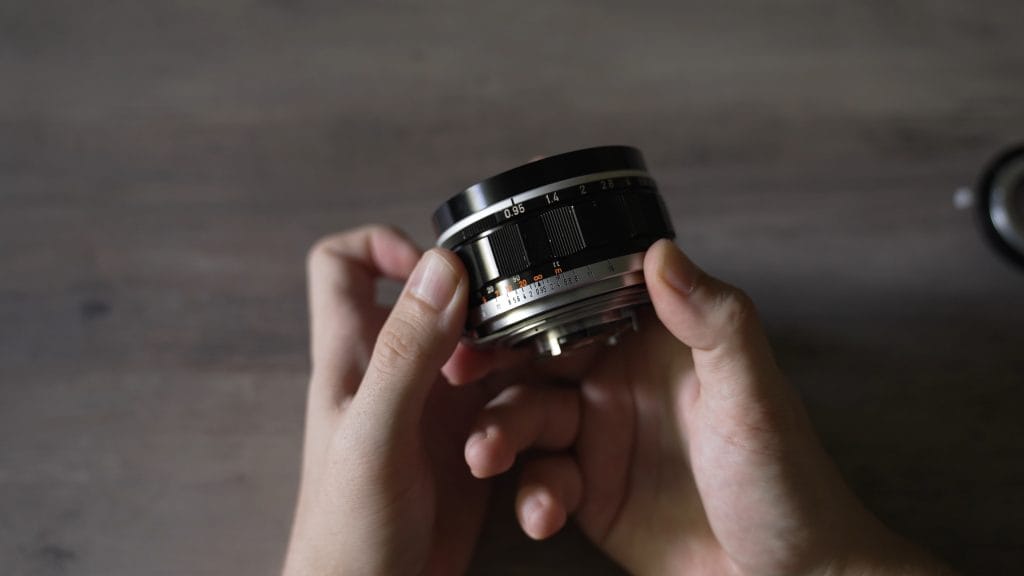
We’ve performed video field tests on 50mm lenses before, but we’ve never featured one quite like this.
With more light-transmitting capability than the human eye, this incredible lens was most likely created as more of a tech demo than anything truly intended for everyday use. Approximately 20,000 of these were made in the 1960’s and early 70’s, with 7,000 more produced as an alternate ‘TV’ version. This TV version originally came with a removable C-mount lens adapter included.
The 50mm f/0.95 lens was made for the Canon 7 & 7s rangefinder system, with a unique rotating bayonet system to support the extra heft of the weighty lens. Over the years, many of these have had their mounts converted to Leica M since the Canon 7 system was fairly short-lived.


There’s no denying that the lens is large, heavy and wide in stature. You’d expect it to be so, with such an impressive aperture value. Weighing in at 605 grams, the lens features 7 glass elements and a 72mm filter size. Made solely of metal and glass, the 50mm is built to last.
The ‘wow-factor’ of course comes from the 10-bladed f/0.95 aperture value. The ‘Dream lens’ sees well in the dark and gives a misty, ethereal quality to portraits. It can nab a stunningly shallow depth of field, and skews surprisingly sharp when stopped down a bit.

It’s still fairly unwieldy to use as an everyday walkaround lens, of course. The focus ring’s throw is exceptionally long, almost like a cine lens, with a firmly dampened motion that is great for precision but makes rack focusing incredibly difficult. The 1-meter minimum focal distance also proved difficult to work with at times, only because I wanted to see just how far the background could be obliterated when focusing on a close-up subject.


But hey–you aren’t here to read. You’re here to see the images this thing can produce. Take a look below.




